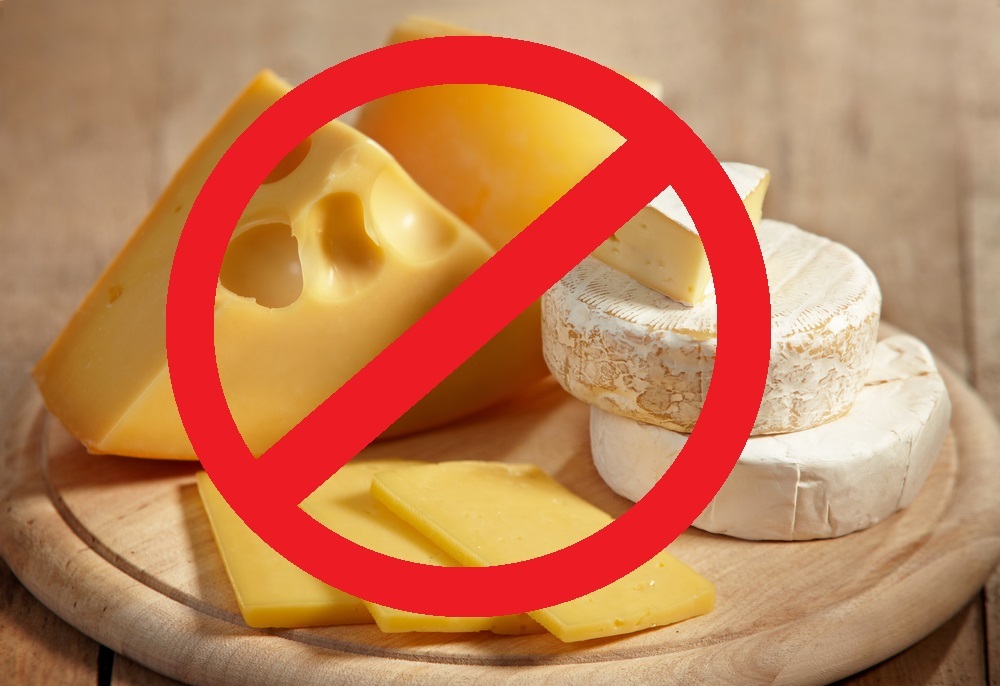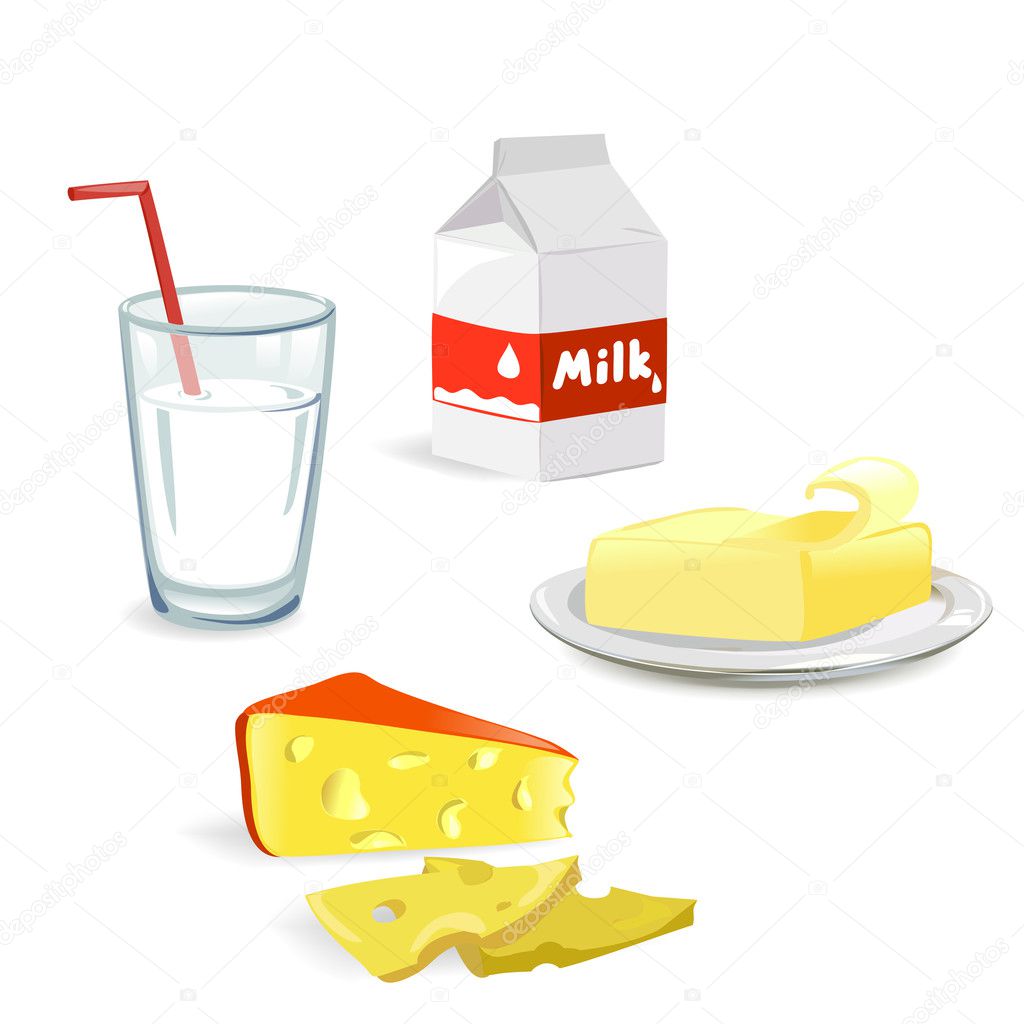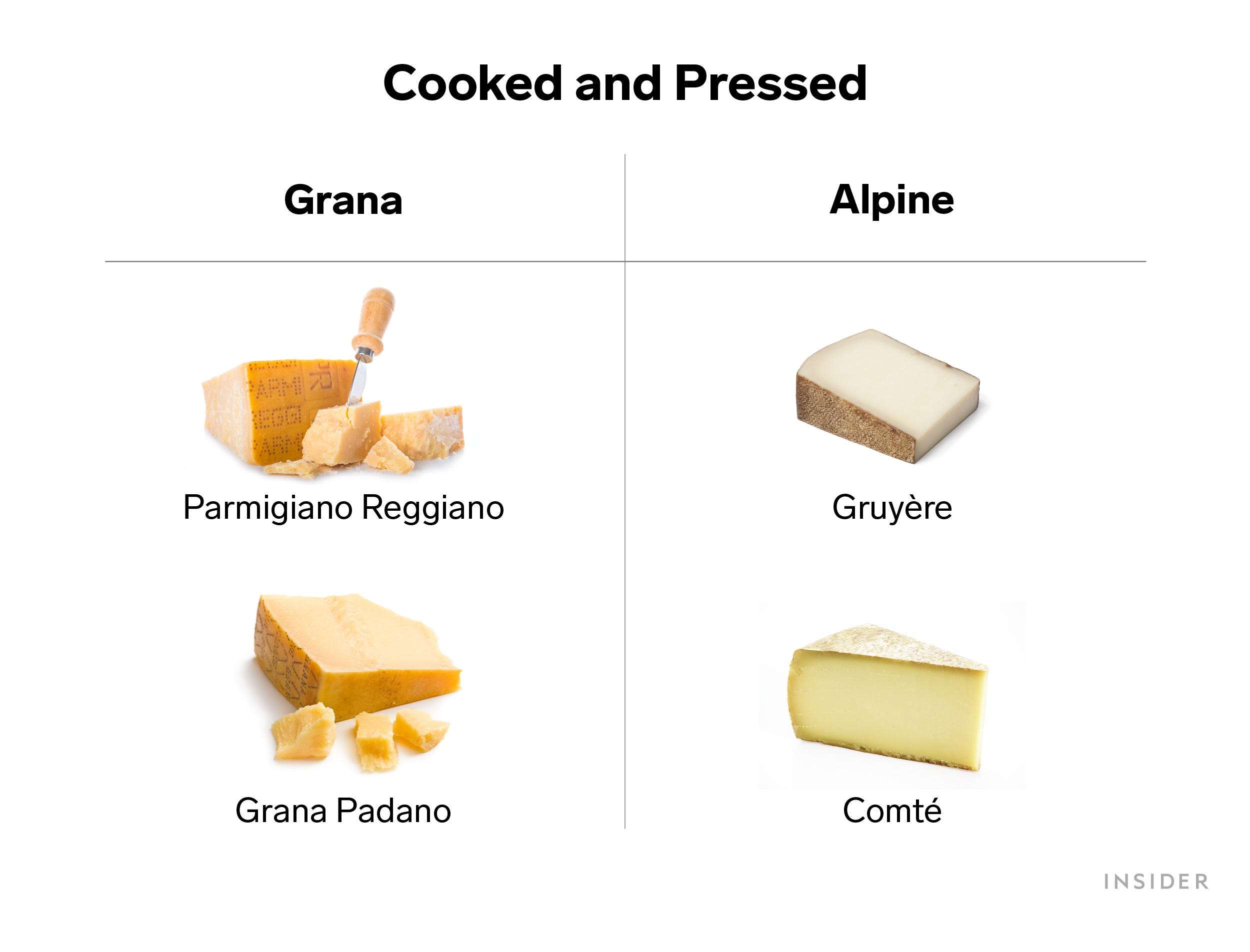Cheese Causes Gas: Lactose Intolerance – Symptoms & Causes
What causes lactose intolerance? What are the symptoms of lactose intolerance? Learn about the causes and symptoms of lactose intolerance.
Understanding Lactose Intolerance
Lactose intolerance is a condition in which people are unable to fully digest the sugar (lactose) found in milk and dairy products. This occurs when the small intestine does not produce enough of the enzyme lactase, which is responsible for breaking down lactose. As a result, undigested lactose moves into the colon, where it interacts with bacteria, leading to symptoms such as diarrhea, gas, and bloating.
Types of Lactose Intolerance
There are three main types of lactose intolerance:
- Primary lactose intolerance: This is the most common type, where lactase production naturally declines as people age, making it difficult to digest dairy products.
- Secondary lactose intolerance: This occurs when an underlying condition, such as intestinal infection, celiac disease, or Crohn’s disease, reduces lactase production.
- Congenital or developmental lactose intolerance: This rare form is present from birth and is caused by a genetic deficiency in lactase production.
Symptoms of Lactose Intolerance
The signs and symptoms of lactose intolerance usually appear within 30 minutes to 2 hours after consuming dairy products. Common symptoms include:

- Diarrhea
- Nausea and sometimes vomiting
- Stomach cramps
- Bloating
- Gas
Causes of Lactose Intolerance
Lactose intolerance is caused by a deficiency in the production of the enzyme lactase, which is responsible for breaking down lactose. This can be due to a variety of factors, including:
- Aging: As people get older, their lactase production naturally declines, leading to primary lactose intolerance.
- Underlying medical conditions: Diseases affecting the small intestine, such as celiac disease, Crohn’s disease, and bacterial overgrowth, can reduce lactase production and cause secondary lactose intolerance.
- Premature birth: Infants born prematurely may have insufficient lactase levels, leading to lactose intolerance.
- Certain cancer treatments: Radiation therapy or chemotherapy that affects the stomach or intestines can increase the risk of developing lactose intolerance.
Diagnosing Lactose Intolerance
If you frequently experience symptoms after consuming dairy products, it’s important to make an appointment with your doctor. They may recommend one of the following tests to diagnose lactose intolerance:

- Lactose tolerance test: This involves drinking a lactose-containing beverage and then measuring the blood glucose levels at intervals to see if they rise, indicating proper lactose digestion.
- Hydrogen breath test: This test measures the amount of hydrogen in your breath after you consume a lactose-containing drink. Elevated hydrogen levels suggest lactose intolerance.
- Stool acidity test: This test measures the acidity of your stool, which can indicate the presence of undigested lactose.
Managing Lactose Intolerance
Most people with lactose intolerance can manage their condition without having to completely give up dairy products. Here are some tips for managing lactose intolerance:
- Gradually introduce small amounts of dairy and gradually increase as tolerated.
- Try lactose-free or low-lactose dairy products.
- Take lactase enzyme supplements before consuming dairy products.
- Avoid high-lactose foods and instead opt for low-lactose options like hard cheeses and yogurt.
- Ensure you’re getting enough calcium and other nutrients from non-dairy sources.
When to See a Doctor
If you frequently experience symptoms of lactose intolerance after consuming dairy products, it’s important to make an appointment with your doctor. They can help diagnose the condition and provide guidance on managing your symptoms and ensuring you get the necessary nutrients. It’s especially important to see a doctor if you’re concerned about getting enough calcium or other essential nutrients in your diet.

Lactose intolerance – Symptoms & causes
Overview
People with lactose intolerance are unable to fully digest the sugar (lactose) in milk. As a result, they have diarrhea, gas and bloating after eating or drinking dairy products. The condition, which is also called lactose malabsorption, is usually harmless, but its symptoms can be uncomfortable.
Too little of an enzyme produced in your small intestine (lactase) is usually responsible for lactose intolerance. You can have low levels of lactase and still be able to digest milk products. But if your levels are too low you become lactose intolerant, leading to symptoms after you eat or drink dairy.
Colon and small intestine
The small intestine and colon are parts of your digestive tract, which processes the foods you eat. The intestines take nutrients from the foods. What isn’t absorbed by the intestines continues along the digestive tract and is passed as stool during a bowel movement.
Most people with lactose intolerance can manage the condition without having to give up all dairy foods.
Products & Services
Symptoms
The signs and symptoms of lactose intolerance usually begin from 30 minutes to two hours after eating or drinking foods that contain lactose. Common signs and symptoms include:
- Diarrhea
- Nausea, and sometimes, vomiting
- Stomach cramps
- Bloating
- Gas
When to see a doctor
Make an appointment with your doctor if you frequently have symptoms of lactose intolerance after eating dairy foods, particularly if you’re worried about getting enough calcium.
Causes
Lactose intolerance occurs when your small intestine doesn’t produce enough of an enzyme (lactase) to digest milk sugar (lactose).
Normally, lactase turns milk sugar into two simple sugars — glucose and galactose — which are absorbed into the bloodstream through the intestinal lining.
If you’re lactase deficient, lactose in your food moves into the colon instead of being processed and absorbed. In the colon, normal bacteria interact with undigested lactose, causing the signs and symptoms of lactose intolerance.
There are three types of lactose intolerance. Different factors cause the lactase deficiency underlying each type.
Primary lactose intolerance
People who develop primary lactose intolerance — the most common type — start life producing enough lactase. Infants, who get all their nutrition from milk, need lactase.
As children replace milk with other foods, the amount of lactase they produce normally drops, but usually remains high enough to digest the amount of dairy in a typical adult diet. In primary lactose intolerance, lactase production falls off sharply by adulthood, making milk products difficult to digest.
Secondary lactose intolerance
This form of lactose intolerance occurs when your small intestine decreases lactase production after an illness, injury or surgery involving your small intestine. Diseases associated with secondary lactose intolerance include intestinal infection, celiac disease, bacterial overgrowth and Crohn’s disease.
Diseases associated with secondary lactose intolerance include intestinal infection, celiac disease, bacterial overgrowth and Crohn’s disease.
Treatment of the underlying disorder might restore lactase levels and improve signs and symptoms, though it can take time.
Congenital or developmental lactose intolerance
It’s possible, but rare, for babies to be born with lactose intolerance caused by a lack of lactase. This disorder is passed from generation to generation in a pattern of inheritance called autosomal recessive, meaning that both the mother and the father must pass on the same gene variant for a child to be affected. Premature infants can also have lactose intolerance because of an insufficient lactase level.
Risk factors
Factors that can make you or your child more prone to lactose intolerance include:
- Increasing age. Lactose intolerance usually appears in adulthood. The condition is uncommon in babies and young children.

- Ethnicity. Lactose intolerance is most common in people of African, Asian, Hispanic and American Indian descent.
- Premature birth. Infants born prematurely might have reduced levels of lactase because the small intestine doesn’t develop lactase-producing cells until late in the third trimester.
- Diseases affecting the small intestine. Small intestine problems that can cause lactose intolerance include bacterial overgrowth, celiac disease and Crohn’s disease.
- Certain cancer treatments. If you’ve had radiation therapy for cancer in your stomach or you have intestinal complications from chemotherapy, your risk of developing lactose intolerance increases.
Foods that Can Cause Gas and Bloating
When I finally stopped eating this one type of food, my digestion drastically changed for the better
For most of my life, I just thought I had a sensitive stomach. I would feel bloated and gassy a few times a week, and the discomfort didn’t seem to have one specific trigger. This pattern went on for so long that I simply taught myself to live with it, and would occasionally tell people, “sorry, I have sensitive digestion.”
This pattern went on for so long that I simply taught myself to live with it, and would occasionally tell people, “sorry, I have sensitive digestion.”
Employing solutions like curling up in fetal position to release gas (only when I was alone, of course!) and keeping Gas-X in my purse for when I needed it definitely helped (In fact, Gas-X was a real lifesaver — Extra Strength Chewables the not only provided fast relief, but they have a nongritty texture that makes taking them easy), but I was still dealing with gas and bloating after meals.
After talking it over with my doctor, we decided I should try eliminating certain foods from my diet for a few months to see if it made any kind of difference. At first, I was devastated at the idea of giving up things like bread and cheese — I’m Italian after all — but I was so fed up with my digestion issues that I was ready to try anything.
First, I gave up gluten. It was difficult at the beginning (read: no more sourdough bread at dinner), but I got used to it over time. The only issue: I still had gas and bloating!
The only issue: I still had gas and bloating!
I gave up soy next. This was easier, but still, the gas and bloating remained.
Then, I gave up dairy.
I have always been a cheese fanatic. Growing up, I could eat a quarter block of hard cheddar cheese in one sitting. I put it on everything, including vegetables. Ice cream was another favorite of mine, and even though I wasn’t a huge milk drinker, stirring cream into my coffee was a staple in my morning routine.
But as soon as I stopped consuming dairy, my occasional gas and bloating after meals started to dissipate. I didn’t want to believe it at first. I ate dairy all throughout my childhood and never seemed to have any issues, so why was this happening now? It turns out, you can grow into a lactose intolerance (which is a condition where the body can no longer properly break down milk lactose), and certain people can even get by with eating a little bit of dairy without having symptoms. Because lactose intolerance can be mild in some people and much more intense in others, my doctor and I deduced that my occasional gas and bloating was probably due to a more mild case.
Once I realized what living life without bloating was like, it was pretty easy to say goodbye to my cheese habit. These days, I try to keep my dairy consumption to a minimum (although the occasional pizza night still happens), and whenever I feel that familiar rumbling, I no longer get frustrated. I just take my trusty Gas-X and make a note of what I ate so I can make sure to either avoid the food next time, or at least eat much less of it.
Is my diet perfect? No way! But figuring out one of my main gas and bloating triggers helped me feel more empowered — and much more comfortable in my jeans.
Foods that cause gas
Gas is a common process in the body: air is swallowed during digestion, digestion of food and fermentation of certain foods in the gastrointestinal tract (GIT) lead to the accumulation of gases. Most often, the accumulated gases themselves are excreted from the body. However, their excessive formation and disruption of the digestive tract can cause flatulence and bloating. Then the cause of excessive gas formation, which most often lies in the diet, should be excluded.
Then the cause of excessive gas formation, which most often lies in the diet, should be excluded.
Where does gas come from in the body
When chewing and swallowing food, a small amount of air is naturally swallowed, which then enters the digestive tract with food. This air stimulates the stomach, and its excess is usually excreted in the form of belching. The air involved in digestion is absorbed by the body and used for the vital activity of the bacteria that inhabit the intestines. These microorganisms, in turn, take part in digestion, and also release gases that accumulate in the intestines. Excess of these gases are excreted naturally through the anus – passing gases. An additional source of gases is food. Some foods produce gas during digestion, usually through fermentation. The predominance of gas-producing foods in the diet of a healthy person can increase gas formation and flatulence – excessive or uncontrolled passing of gases.
Which foods cause gas
The most common causes of increased gas formation are foods rich in indigestible fiber or protein, containing many sugars, as well as fermentation and fermentation products.
Legumes
Beans, peas, lentils, soybeans, beans, etc. Legumes contain a lot of fiber as well as sugars. Their digestion is slow and in the process leads to increased gas production.
Cruciferous
Cabbage, broccoli, cauliflower, asparagus and others. These are one of the main foods that cause gas and bloating.
Cruciferous foods are rich in dietary fiber, which is difficult to digest and can begin to ferment inside the intestines. In addition, the raffinose contained in them is a sugar that feeds the bacteria of the gastrointestinal tract and provokes their gas release.
Pickled and fermented products
Pickled and pickled vegetables: sauerkraut, pickled cucumbers, pickled tomatoes and others. Not only are they themselves products of fermentation, which continues during digestion, these foods contain a large amount of salt. Violation of the water-salt balance in the body provokes gas retention in the body.
Dairy products
Milk, kefir, cheeses, etc. Fresh dairy products contain lactose, a sugar favored by intestinal fermenting bacteria that produce a lot of gas. Dairy products are the result of fermentation and fermentation.
Carbonated drinks
Lemonades, tonics, mineral water and others. They provoke an increased accumulation of gases with their own composition. When a person drinks such drinks, he also swallows the gases contained in them.
Beer and champagne
A separate category of foods that cause gas and bloating in adults. These drinks are obtained as a result of fermentation and therefore contain a lot of gases themselves. Also, sugars in their composition are involved in the metabolism of intestinal microflora.
Starchy vegetables
Potatoes, wheat, corn and others. Starch is very difficult to digest by the body and requires a larger number of intestinal bacteria to be connected to digestion, which in turn produce a lot of gases when starch is broken down.
Onions and garlic
Onions and garlic are rarely eaten in their pure form, they act as ingredients in the preparation of various dishes. People with flatulence are better off avoiding them. The sucrose contained in the onion is the cause of increased gas formation. Garlic may be poorly tolerated by some people due to enzymatic disorders, in which case the frequent consumption of garlic will provoke the production of gases.
Fruits and dried fruits
Foods that cause bloating and flatulence due to their high sugar content. In addition, increased gas formation occurs during the digestion of dietary fiber fruits.
Pastry and flour
Any yeast and sweet pastries. Yeast provokes fermentation processes in the intestines, which increases the accumulation of gases.
How to get rid of gas
Increased gas formation is an unpleasant phenomenon that reduces the quality of life. In addition, in some cases, flatulence can be a symptom of certain diseases of the gastrointestinal tract: irritable bowel syndrome, enzymatic deficiency of various nature, dysbacteriosis and others. A balanced diet and the elimination of gas-producing foods from the diet can solve the problem of bloating and flatulence in a healthy person. Lactoflorene® FLAT STOMACH also helps to normalize gas formation.
In addition, in some cases, flatulence can be a symptom of certain diseases of the gastrointestinal tract: irritable bowel syndrome, enzymatic deficiency of various nature, dysbacteriosis and others. A balanced diet and the elimination of gas-producing foods from the diet can solve the problem of bloating and flatulence in a healthy person. Lactoflorene® FLAT STOMACH also helps to normalize gas formation.
On average, a daily course of Lactoflorene® FLAT STOMACH helps reduce gas in 10-30 days. The main components of Lactoflorene® FLAT STOMACH act versatile, the composition is aimed at the main causes of flatulence and bloating: – the enzymatic balance responsible for adequate digestion of food is enhanced by alpha-galactosidase, which is part of Lactoflorene® FLAT STOMACH. This enzyme is involved in the breakdown of complex carbohydrates, which take a long time to digest. The beta-galactosidase in Lactoflorene® FLAT STOMACH is an additional source of lactase which aids in the digestion of dairy products.
– the intestinal microflora is supported by additional probiotics – the components of Lactoflorene® FLAT STOMACH. Bifidobacteria and lactobacilli enriches the microbiota with strains that inhibit the activity of putrefactive bacteria.
– the carminative components of Lactoflorene® FLAT STOMACH – plant extracts of lemon balm, chamomile, ginger and passionflower also stimulate the removal of excess gases. If the diet and taking carminatives do not lead to positive dynamics, you should consult a doctor.
FEEL EASY EVERY DAY WITH
SLIM STOMACH
gluten free
lactose free
Flatulence – bloating due to excessive accumulation of gases in the intestines
- restoring the balance of intestinal microflora
- elimination of abdominal pain syndrome, diarrhea and constipation
- digestion of complex carbohydrates and dairy products
- stress relief
made in italy
Which foods cause flatulence?
Each of us at one time or another suffered from increased gas production and an acute, urgent need to release this gas somehow. It usually happens more often than we would like, and in the most inappropriate places. Check out the list of products that provoke flatulence, and you will reduce the likelihood of embarrassment to a minimum. Spoiler: among them there are extremely useful ones that we are constantly advised to lean on.
It usually happens more often than we would like, and in the most inappropriate places. Check out the list of products that provoke flatulence, and you will reduce the likelihood of embarrassment to a minimum. Spoiler: among them there are extremely useful ones that we are constantly advised to lean on.
Tags:
Health
products
www.pexels.com
“The gas bubbling in your stomach is made up of two components: swallowed air (if you eat too fast, forgetting to chew importantly) and everything that is released during the processing of specific foods,” says David Poppers, gastroenterologist and associate professor at New York University Langon Medical Center. “To avoid excessive flatulence, it is advisable to find out which foods affect you the most, since each person has an individual intestinal microbiota, which is mainly responsible for the formation of gases.”
Contents of the article
Broccoli, cabbage, and other high-fiber vegetables
Cruciferous vegetables—broccoli, cauliflower, cabbage, and Brussels sprouts—are particularly high in fiber, a type of carbohydrate that our body cannot digest it.
“Many carbohydrates are broken down into sugar molecules, but fiber cannot be broken down and passes through the body undigested,” explains Dr. Christine Lee, a gastroenterologist at the Cleveland Clinic. which produces gas, and when it accumulates, bloating occurs.
Oatmeal and whole grain bread
Whole grains cause gas for the same reason as the vegetables mentioned above: they have too much fiber. However, these non-digestible fibers should not be completely eliminated from the diet, as they are good for heart and intestinal health, and help manage weight.
Try gradually increasing your fiber intake by adding one serving of these foods a day until your stomach gets used to it. Extra fluid will also help: for every 5 grams of fiber, an extra glass of water.
ADVERTISING – CONTINUED BELOW
Milk, cheese and yogurt
Dairy products contain a type of sugar called lactose, which many people have difficulty digesting from an insufficient amount of an enzyme called lactase. This leads to bloating, gas formation and even constipation.
This leads to bloating, gas formation and even constipation.
In the United States, for example, about 65 percent of people begin to have trouble digesting milk as they age.
If you too have a sensitivity to dairy products, but don’t want to give them up, try looking for low lactose options or take a lactase supplement.
Apples, bananas, peaches (and many other fruits as well as dried fruits)
These are also high in fiber and high in natural sugars such as fructose. Although less common than lactose intolerance, sometimes the gastrointestinal tract cannot break down all the sugars found in fruits. These carbohydrates enter the large intestine and are fed by bacteria, which produce gas as a by-product.
Legumes
There are no surprises here, we know about peas from childhood. Most legumes are high in fiber as well as “heavy” sugars, which our poor intestines produce all sorts of gases in an attempt to digest: hydrogen, methane, and sulfur (responsible for the characteristic smell).
To make legumes easier to digest, they must first be soaked and the water changed during cooking.
Carbonated drinks
They contribute to increased gas formation, if only because they themselves are saturated with gas. If life without magic bubbles is not sweet for you, then at least try to choose drinks without sugar.
Protein (sorry)
Protein is essential for maintaining and building muscle mass, but overusing it can lead to large amounts of gas.
“When you eat a normal amount of about one gram per kilogram of your own everything, then everything goes well: the protein is broken down into amino acids and absorbed into the bloodstream,” says registered dietitian Kate Scarlata. “But if you consume too much, the excess reaches the large intestine, where the microbes feast. Which leads to the release of hydrogen sulfide.
Sports nutrition exacerbates the problem as it often contains casein and whey protein, which are high in lactose.
Artificial sweeteners
Yes, foods with sugar substitutes are lower in carbs and calories, but there is some bad news. Sorbitol, erythritol, xylitol and others related to alcohols are not completely absorbed by the intestines, as a result you get an additional fermentation process, which can cause flatulence, bloating and diarrhea.
What to do?
First, you can take digestive enzyme supplements. And here are some more effective tricks.
Keep a food diary
For several weeks, record what you eat, how much, and how you feel about it. This will help you identify the worst offenders. Pay attention to any symptoms that bother you: constipation, stomach pain, heartburn, or nausea. Discuss them with your doctor so that he can rule out serious gastrointestinal diseases, such as irritable bowel syndrome.
Exercise more
Regular exercise improves metabolism and bowel function. It will accumulate less underdigested food and, accordingly, there will be less fermentation and gas formation.

